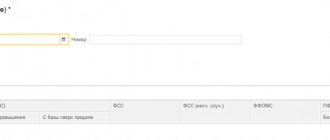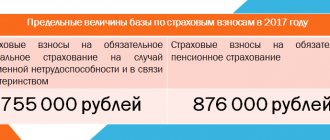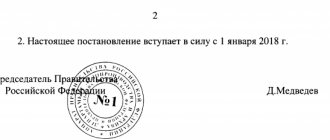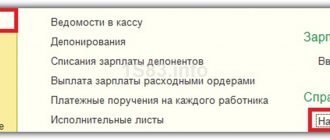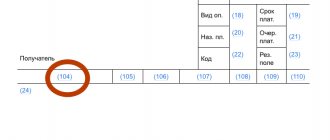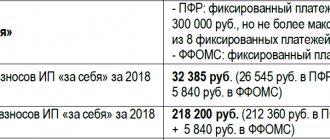Source/official document: attachment to letters No. AD-30-26/16030, 17-03-10/08–473 dated 12/09/2014 Submission method: paper or electronically Penalty for late submission: 200 rubles. for each employee
Document name: Card for individual accounting of amounts of accrued payments and other remunerations and amounts of accrued insurance premiums Format: xls Size: 134 kb
Print Preview Bookmark
Save to yourself:
Since 01/01/2017, payments to the Pension Fund of Russia, Social Insurance Fund and Compulsory Medical Insurance Fund are administered by the Tax Service of Russia. The Tax Code of the Russian Federation has a special chapter No. 34 dedicated to insurance premiums. The innovation abolished the previously existing Federal Law No. 212. Do enterprises need to monitor payments in the form of a Personal Account Card in 2021?
Card for individual accounting of amounts of payments and insurance premiums: what is it?
In 2021, Federal Law No. 212 of July 24, 2009 stated that accounting for insurance and social contributions for an employee is mandatory at the enterprise. From 01/01/2017, payments are regulated on the basis of Ch. 34 Tax Code of the Russian Federation. Article clause 4 art. 431 of the Code almost completely repeats Art. 15, 28 Federal Law No. 212. Accordingly, the employer’s obligation to keep records for each employee has not been canceled.
To simplify accounting, the FSS and the PRF of Russia recommended a card form as an attachment to letters No. AD-30-26/16030, 17-03-10/08–473 dated 12/09/2014 This is not a mandatory form : an enterprise can develop it independently with taking into account the specifics of its activities, for example, hazardous production or the presence of employees who were Chernobyl victims.
After the changes that took place, the new recommended form has not yet been approved. You can use the card form developed in 2014, with minor adjustments. It is necessary to replace outdated references to Federal Law No. 212 with current excerpts from the Tax Code, correct the old names of insurance premiums with new ones, and indicate the current payment limits.
Why do you need a card for individual accounting of rewards and social contributions?
Insurance premiums are assessed by all employers who make payments to employees.
Since 01/01/2017, tax authorities control their accrual and payment. From this date, Chapter 34 of the Tax Code of the Russian Federation came into force, which sets out the rules for calculating and paying social contributions for compulsory pension, medical and social insurance. Paragraph 4 of Article 431 of the Tax Code of the Russian Federation states the employer’s obligation to organize accounting of remunerations paid and insurance premiums accrued in respect of them individually for each individual. This information must be stored for at least six years (subclause 6 of clause 3.4 of Article 23 of the Tax Code of the Russian Federation). Despite the fact that liability for the lack of accounting documents for social contributions is not directly established, the possibility of the tax authorities bringing the payer to justice under Article 120 of the Tax Code of the Russian Federation cannot be ruled out.
Who hands over the Card and in what cases
Payers must keep records of insurance, pension and social contributions for each employee separately from the first day of his work. This is mandatory for all legal entities and individual entrepreneurs who employ at least one person. The full list of payers is given in Art. 419 of the Tax Code of the Russian Federation.
Records are kept in the form of a card, which is issued for each employee on his first paid day. It is filled out once a month based on the results of the previous month with a cumulative total, calculated for the calendar year. If an employee got a job, for example, in March, dashes are added for January–February.
Unlike other forms of insurance reporting (SZV-M, RSV-1), there is no need to specifically submit the card to funds and departments. It is required only for on-site and desk audits by the tax service and various funds, as well as for reconciling payment amounts at the end of the year. Thus, the Pension Fund of Russia requests cards in accordance with the Order of the Pension Fund of Russia No. 34R dated 02/03/2011.
Insurance registration card for simplified people in 2017-2018
Clause 4 art. 431 of the Tax Code of the Russian Federation does not make any distinction based on the legal form or taxation system used by policyholders. If, according to Art. 419 of the Tax Code of the Russian Federation, an individual entrepreneur or an organization were recognized as payers of contributions, which means they are obliged to comply with the legislator’s requirement to maintain individual cards.
Read about social insurance payments incurred by individual entrepreneurs in the material “What insurance premiums does an individual entrepreneur pay in 2017-2018?” .
Errors in the data on registration cards or the absence of the latter can be costly during verification: from 10,000 to 30,000 rubles, if the error did not underestimate the tax base, and 20% of the amount of unpaid contributions with a minimum of 40,000 rubles. in case of underestimation of the base (Article 120 of the Tax Code of the Russian Federation).
Providing a card
The card is necessary to confirm the fact of keeping records of payments and contributions at the enterprise during audits. The Tax Code of the Russian Federation does not specify the form for maintaining this accounting. Accordingly, you can fill it out electronically (in 1C or Excel) or download a form for an individual accounting card for payments and insurance premiums and fill it out by hand on paper.
If the company’s accounting department works with 1C, the card is printed annually to verify the amount of contributions to funds for each employee or, as necessary, during audits. The form is found in section 1C “Payroll calculation by organizations”, subsections “Taxes and contributions”, “Card”. You should select the employee’s full name, print out the generated form, certify it with the signature of the chief accountant and a blue seal.
It is also recommended to make a paper version of the card at the beginning of the year for the previous period. The document requires the signature of the chief accountant and the seal of the organization. The final and intermediate forms should be kept.
Why do you need an insurance premium card?
In accordance with paragraph 4 of Art.
431 of the Tax Code of the Russian Federation, payers of insurance premiums must take into account the process of forming the base for contributions and the calculation of the contributions themselves separately for each individual to whom income is paid. There is currently no officially approved form for this. In most cases, in practice, a document such as an individual insurance premium registration card serves for this purpose. But your register may be called differently. The main thing is that it contains monthly and cumulative information for each individual:
- about payments to the employee;
- formation of the contribution base;
- the amounts of assessed contributions with their breakdown by fund and an indication of expenses made at the expense of the Social Insurance Fund.
To learn about the form of the report, which includes summary data on contributions accrued to employees, read the article “Unified calculation of insurance premiums - form.”
A sample of filling out such a card was prepared by ConsultantPlus experts. Get free demo access to K+ and go to the Ready-made solution to find out all the details of document preparation.
Penalty for late delivery
Failure to provide a card at the request of the inspection authorities will be regarded as failure to keep records of insurance and other payments and contributions. This threatens the employer with tax liability under clause 1 of Art. 126 of the Tax Code of the Russian Federation: a fine of 200 rubles. for each employee. So, an enterprise with a staff of 40 people will pay 200 * 40 = 8000 (rubles).
It must be remembered that the storage period for accounting documents is 5 years (Article 29 of Federal Law No. 402 of December 6, 2011). The requirement to provide cards for an earlier period is illegal.
Expenses for insurance premiums and taxes
In this article, we will try to consider in as much detail as possible the nuances of recognizing expenses for insurance premiums, the correctness of the program settings at the initial stage, and compare indicators according to tax and accounting data using reports, which will simplify the user’s task when submitting reports.
These expenses are recognized in full in the tax accounting of the simplified tax system. To do this, they must be accrued and paid.
Expenses are accrued at the time of payroll.
The accrual of insurance premiums is reflected in the accounting and tax registers.
Let's look at the register scheme and their impact on accounting and tax reporting:
We will look at what each register is responsible for and how the registers are interconnected while solving the example.
Example
- The employees' salaries were accrued in the amount of 30,000 rubles, insurance premiums were accrued, of which, for one employee, contributions and wages were not accepted as expenses (10,000 rubles);
- Payments of 7,000 rubles were paid.
Before proceeding directly to the calculation of contributions, it is necessary to check the correctness of the settings for wages and the calculation of insurance premiums for tax accounting of the simplified tax system in the program.
Let’s check the register of information “ Cost items for insurance premiums”
«.
By default, insurance premiums are reflected in the same cost items as wages. If payroll is reflected under the item “Wages and salaries”, then all insurance premiums are reflected under the item “ Wages and salaries”
”.
Next, let's move on to setting up salary reflection. According to the conditions of our task, for one employee, wages and contributions will not be accepted as expenses; accordingly, we will create two methods of accounting for wages:
1 — accruals for employee “ Accepted
I” in expenses under the simplified tax system.
2 — accruals for the employee “ Not accepted”
” in expenses under the simplified tax system and the calculation of tax do not have any impact.
Let’s point out that the employee Igor Petrovich Aleksandrov’s accrual method is “Accepted” in expenses for the purposes of the simplified tax system, and the employee Elizaveta Yuryevna Fedulova’s method is “Not accepted” in expenses for the purposes of the simplified tax system.
Calculation of wages and insurance contributions to employees of the organization:
Based on the movement of the document through the accounting and tax registers, we will analyze the calculation of insurance premiums:
1) According to the accounting registers, contributions in the amount of 9,060 rubles were accrued.
For tax purposes, the document makes a movement in the register “Other calculations” and “Expenses under the simplified tax system”:
2) Register “Other calculations”
is intended for accounting of mutual settlements regarding salaries. The occurrence of accounts payable to the organization's employees and insurance funds is reflected in the "" register as expense entries.
According to the “Other settlements” register, there was a payable for insurance premiums in the amount of 9,060 rubles.
Next, we will consider the movements of the document in the register “Expenses under the simplified tax system”
:
3) According to the simplified tax system register
Incoming entries with the status “
Not paid
” are entered for the type of expense “
Taxes and contributions
”.
Let's pay attention to the column “ Reflection in NU
” - for Fedulov’s employee, expenses are not accepted for the purposes of the simplified tax system - the amount of expenses not accepted for insurance premiums amounted to 3,020 rubles. This amount will not be included in expenses that reduce the tax base when calculating tax.
As for employee Alexandrov, the amount of accepted expenses for the purposes of the simplified tax system for this employee amounted to 6,040 rubles.
At this stage, all the conditions for recognizing expenses for insurance premiums have not been met and there are no movements in the “Book of Income and Expenses I” register and no entries are made in the KuDiR.
Payment of tax (PFR)
1. The document makes movements in the accounting registers in the amount of 6,600 rubles.
2. In the “Income and Expenses Accounting Book I” register in the “Expenses”
amounts for recognized expenses are reflected and will be reflected in the KuDiR.
“Total Expenses”
column reflects the amount of expenses indicated in the document (including both recognized and unrecognized expenses).
3. A credit entry is made in the “Other settlements” register—accounts payable for pension insurance expenses in the amount of 6,600 rubles are repaid.
4. In the “STS Expenses” register, an expense entry is made with the status “Unpaid” - this entry indicates that the expense has been paid. The entry for this register is divided into two parts:
- Payment of the “Accepted” part of expenses in the amount of 4,400 rubles.
- Payment of the “not accepted” part of expenses in the amount of 2,200 rubles.
Payment of tax (FSS)
1. According to the accounting registers, the document makes movements in the amount of 400 rubles.
2. According to the register ““Income and Expense Accounting Book I” in the “Expenses”
the recognized part of expenses for tax purposes is reflected in the amount of 400 rubles.
“Total Expenses”
column reflects the amount of expenses indicated on the document (includes recognized and unrecognized expenses).
3. In the “Other settlements” register, a credit entry is made for the amount of repayment of accounts payable for medical insurance in the amount of 400 rubles.
4. In the register “Expenses under the simplified tax system” an expense entry is made in the amount of 400 rubles. You can notice that the first entries in the register are those in the “Accepted” expenses section. Accordingly, the expense was paid in the amount of 400 rubles.
To check the correctness of the balance according to accounting and NU indicators, we will generate an analysis of account 69 and a report “Accounting analysis according to the simplified tax system”:
The amount of outstanding insurance premiums according to accounting data = 2,060 rubles.
Debt on insurance premiums (according to NU indicators) = (470 + 1530 + 60) = 2,060 rubles.
We can conclude that the indicators according to the NU and BU data are equal and, accordingly, we can proceed to the next stage.
How to fill out the form
Let's take a closer look at filling out each page of the card.
At the beginning of the form, you must indicate general information about the employee: full name, insurance number, tax identification number, type and number of the concluded contract (labor, civil law, etc.).
The plate on the right shows the tariff code (if general, then 01), as well as the percentage of tariffs by type of contribution: for compulsory pension insurance (MPI) - 22 percent; for compulsory health insurance (CHI) – 5.1 percent; for compulsory social insurance (FSS) - 2.9 percent.
Next, you need to determine the calculation base and the amount of contributions.
https://www.youtube.com/watch?v=ytaboutru
In FFOMS. Since 2015, employers have paid contributions to compulsory health insurance on all payments that are subject to contributions (no limit has been set). Therefore, the card does not provide lines for above-limit payments in terms of compulsory medical insurance. You only need to show the base and the amount of accrued contributions.
In the Pension Fund. For pension contributions, the base limit is 711 thousand rubles. For all payments above this amount, contributions are paid at a rate of 10 percent. Payments in excess of the limit must be reflected on the card in a special line “Amount of payments exceeding the established…”. They are not included in the database; they are indicated on the card before the line “Base for calculating insurance premiums for compulsory health insurance”.
Therefore, the line where pension contributions are reflected is divided into two parts: for contributions accrued for payments within the base, and for over-limit contributions.
Please note: if a construction company applies a simplification, then payments in excess of the maximum base are not subject to contributions (subclause 8, clause 1, article 58 of law No. 212-FZ, letter of the Ministry of Labor of Russia dated January 30, 2015 No. 17-3 / B-37 ).
In the FSS of Russia. The limit for contributions to the social insurance fund is 670 thousand rubles, this amount differs from the base limit for pension contributions (Resolution of the Government of the Russian Federation of December 4, 2014 No. 1316). Therefore, on page 1 of the card, different lines appeared for payments exceeding the limit on pension contributions and for payments exceeding the limit on contributions to the social insurance fund.
Please note that there is no limit set for contributions for injuries (they are accrued from all payments).
There is a special line on page 1 for benefits expenses, but at the same time payments need to be deciphered on page 3.
For employees who work in harmful or dangerous conditions, you must fill out page 2 of the card.
This sheet reflects the amounts of payments subject to contributions at additional fixed (6 or 9%) or differentiated (from 2 to 8%) tariffs.
We invite you to read: Termination of payment of disability insurance pension
You also need to calculate the fees themselves. Moreover, the information must be broken down depending on what class the work belongs to.
During the year, the additional tariff may change if the company conducts a special assessment of working conditions. Until the day the assessment report is approved, contributions must be calculated at rates of 9 and 6 percent (for lists No. 1 and No. 2, respectively).
And from the date of approval of the report - at differentiated tariffs: from 2 to 8 percent (letter of the Ministry of Labor of Russia dated March 13, 2014 No. 17-3/B113). Contributions at different rates are indicated in different subsections of the card.
Page 3 of the card is intended for recording the amounts of benefits (sick leave, maternity leave, children's benefits, as well as benefits for insurance against industrial accidents) and other payments at the expense of the Federal Social Insurance Fund of Russia. In addition to the amounts, you must enter the number of payments or sick days.
When reflecting monthly childcare benefits, they separately indicate how much goes to the first child and how much goes to other children.
If there are relevant categories of workers, it is necessary to clarify how much money was issued from the federal budget (for example, in relation to payments to Chernobyl victims). Since in some cases, financial support for social security expenses is made through interbudgetary transfers from the federal budget provided by the Federal Social Insurance Fund of Russia (clause 5, article 3 of law No. 255-FZ, article 5 of Federal Law of December 1, 2014 No. 386-FZ ).
The card also contains a line for events that were financed by the social insurance fund. These include: special assessment of workplaces, mandatory medical examinations, purchase of first aid kits, etc.
But these are expenses not for a specific employee, but for the company as a whole. Therefore, they may not be indicated on the card.
Based on the data on page 3 of the card, it will be easy to fill out Table 2 “Expenses for compulsory social insurance in case of temporary disability and in connection with maternity” and Table 8 “Expenses for compulsory social insurance against accidents at work and occupational diseases” of Form-4 of the Federal Social Insurance Fund of the Russian Federation .
Example
Borisov I.I.
Works at Stroika LLC. Salary – 80,000 rubles. per month. In March, he was sick for seven days, his salary that month was 73,000 rubles, and his disability benefit was 2,000 rubles. We invite you to read: Lost compulsory medical insurance policy - how to restore it?
Above-limit payments to compulsory pension insurance and the Social Insurance Fund must be reflected on the card starting from September 2015.
Let's assume that Borisov's profession is included in list No. 1 of hazardous work. In October 2015, the company plans to conduct a special assessment of working conditions. Based on its results, class 3.4 (harmful) will be established for this employee’s workplace. Consequently, before the special assessment, the company calculates additional pension contributions at a rate of 9 percent, and after - at a rate of 7 percent (Clause 2.1, Article 58.3 of Law No. 212-FZ).
The special assessment report was approved on October 16, 2015. The employee's salary this month was 40,000 rubles. before assessment and 40,000 rubles. after it (11 working days from October 1 to 15 and from October 16 to 31).
According to the author, based on the legislation and the explanations provided by the Russian Ministry of Labor, salaries and contributions are divided in proportion to the days of the month: before the date of approval of the special assessment report and after it. There are no conditions in the legislation that the tariff needs to be changed from next month. A sample of filling out a card for an employee is given on page 77.
Why did we develop a new form?
For each employee, it is necessary to keep records of payments and contributions (clause 6 of article 15, subclause 2 of clause 2 of article 28 of the Federal Law of July 24, 2009 No. 212-FZ).
Mandatory accounting of contributions and expenses for insurance for temporary disability and maternity is also provided for in paragraph 1 of Article 4.8 of the Federal Law of December 29, 2006 No. 255-FZ. To do this, use an individual registration card. Its previous form was recommended in the joint letter of the Pension Fund of January 26, 2010 No. AD-30-24/691, FSS of Russia dated January 14, 2010 No. 02-03-08/08-56P. But now it is not relevant, since it contains only one line for the maximum contribution base, and since 2015, the limits for funds are different.
https://www.youtube.com/watch?v=ytpressru
There are other adjustments that take into account, in particular:
- abolition of the employer's division of pension contributions into insurance and funded parts;
- elimination of the breakdown of contributions for health insurance by fund: to the FFOMS (Federal Compulsory Medical Insurance Fund) and TFOMS (Territorial Compulsory Health Insurance Fund), since contributions are transferred only to the FFOMS;
- the need to indicate the status of a foreign worker (in connection with the obligation to pay contributions from the salaries of foreign workers).
Therefore, instead of one page there are now three (three sections) in the card. The first page must be completed for all employees. The second is only for those who are employed in harmful or dangerous jobs. And the third - for employees receiving benefits from social insurance funds.
Mandatory requirement
The new chapter of the Tax Code (clause 4 of Article 431) speaks of the need for each policyholder to keep records of the amounts:
- accrued payments;
- other rewards;
- insurance premiums for them.
This must be done for each person in whose favor payments were made. These positions must be reflected in a separate register. For example, a card for individual accounting of accrued payments. The 2021 sample, in our opinion, will not differ much from previous periods.
The fact is that this obligation migrated to the Tax Code from Law No. 212-FZ on insurance premiums unchanged. In addition, the object of taxation of insurance premiums and the rules for their calculation have not undergone major revision. With the exception, perhaps, of excess daily allowances.
For more information about this, see “How per diem is assessed in insurance premiums from 2021.”
We invite you to read: Second pension for military pensioners and its calculation: algorithm
